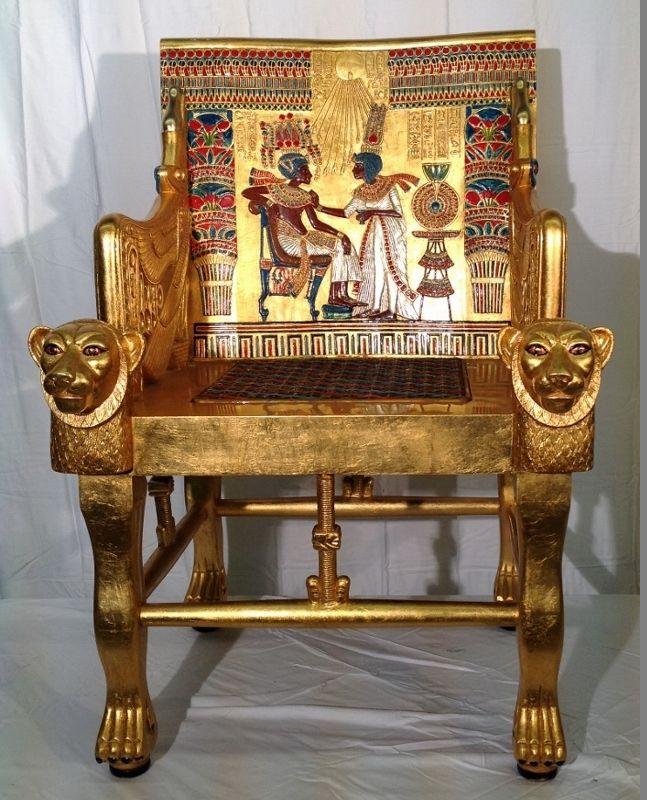The Golden Throne of Tutankhamun stands as a remarkable testament to the skill and artistry of ancient Egyptian craftsmen. Discovered in 1922 by the British archeologist Howard Carter, this opulent piece of furniture has captivated historians, archeologists, and art enthusiasts for over a century. Its vibrant colors and intricate details have withstood the test of time, remaining as vivid and awe-inspiring today as they were over three thousand years ago. This article delves into the fascinating history, detailed craftsmanship, and symbolic significance of the Golden Throne of Tutankhamun.
Discovery of the Golden Throne
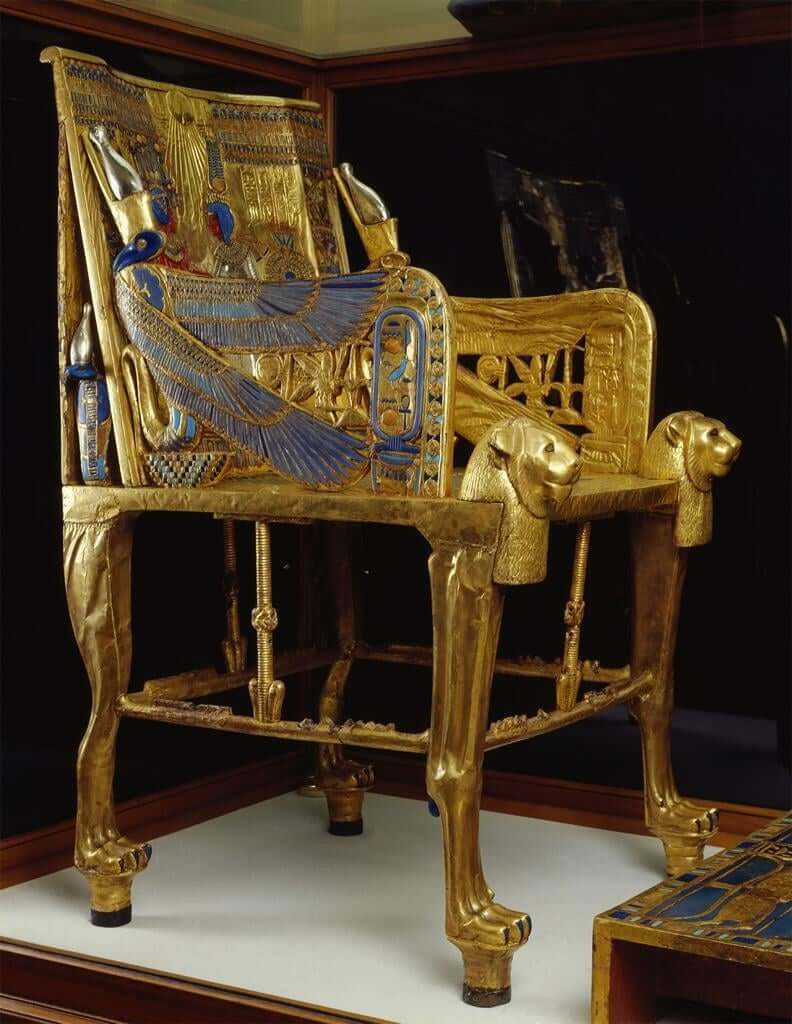
The Golden Throne of Tutankhamun was unearthed in 1922 in the antechamber of the young pharaoh’s tomb (KV62) in the Valley of the Kings, West Thebes. Carter discovered the throne beneath a hippopotamus funerary bed, amidst a treasure trove of artifacts. Its pristine condition and ornate design immediately set it apart as one of the most significant finds in the tomb, offering a glimpse into the grandeur of the New Kingdom’s late 18th Dynasty.
Craftsmanship and Materials
The throne is a luxurious armchair distinguished by its complex technique and abundance of intricate details. It is crafted from wood, covered with gold and silver, and adorned with semi-precious stones and colored glass. The seat is protected by two projecting lions’ heads, symbolizing strength and protection. The arms of the throne take the form of winged uraei—rearing cobras wearing the double Pschent crown of Egypt—guarding the cartouche names of the king.
Detail of the Golden Throne
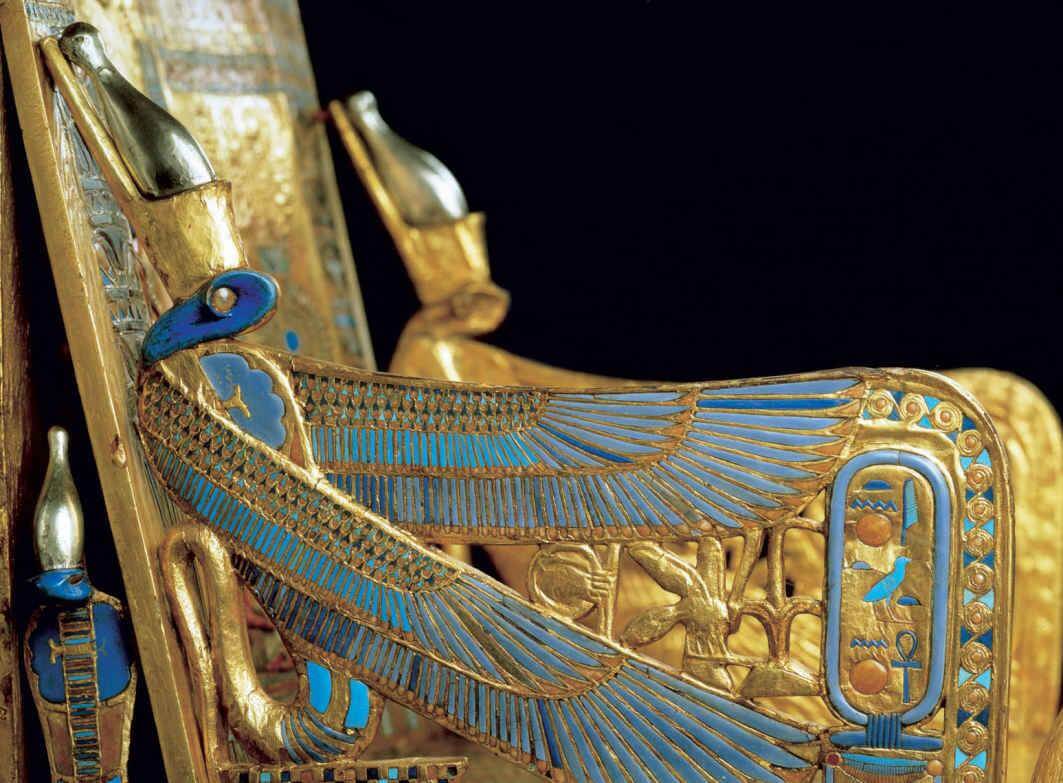
One of the most captivating aspects of the throne is its elaborate decoration. The backrest features a scene of Queen Ankhesenamun anointing Tutankhamun with perfumed oil, a depiction rendered in the Amarna style. The sun disc Aten shines above the royal couple, symbolizing life and divine presence. Tutankhamun is shown wearing a composite crown and a broad collar, while Ankhesenamun is adorned with a diadem. Their bodies and wigs are inlaid with exquisite colored glass, and their linen robes are depicted in shimmering silver.
Symbolic Significance
The throne, known as “Ist” in Egyptian hieroglyphs, is named after the mother goddess Isis, often depicted bearing a throne on her head. This association underscores the throne’s symbolic role as a link between the divine and the mortal realms. For the ancient Egyptians, the throne represented majesty, stability, safety, and balance. As pharaohs were considered gods on earth, Tutankhamun sitting on this golden throne would have been seen as an embodiment of divine authority and power.
The Role of the Throne in Ancient Egyptian Culture
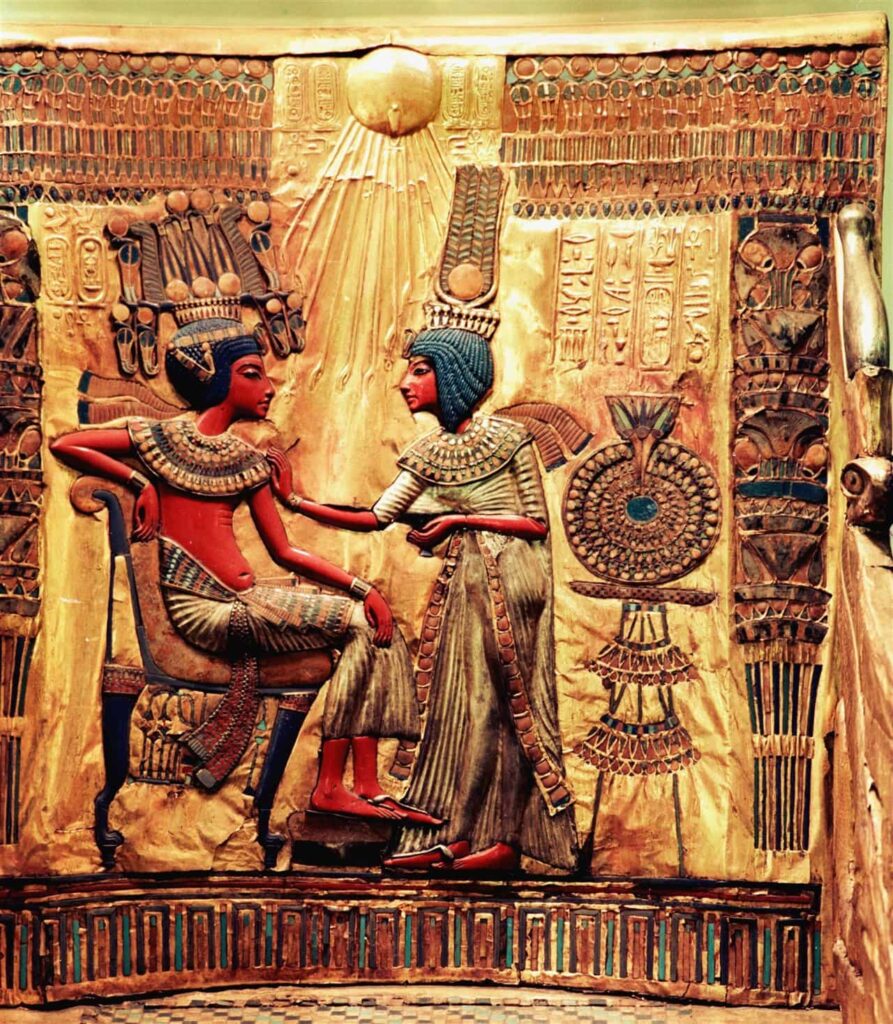
The throne was more than just a seat; it was a powerful symbol of the pharaoh’s divine right to rule. It conveyed the king’s connection to the gods and his role as the earthly representative of divine will. The imagery and symbolism incorporated into the throne’s design would have reinforced Tutankhamun’s status as a god-king, capable of imposing his divine will over his subjects.
Preservation and Display
The Golden Throne of Tutankhamun is currently displayed in the Egyptian Museum in Cairo, where it continues to draw countless visitors from around the world. Its preservation is a testament to the high level of craftsmanship and the advanced techniques used by ancient Egyptian artisans. Despite being over three thousand years old, the throne’s colors and details remain remarkably well-preserved, offering a vivid window into the past.
Importance of the Throne in Modern Times
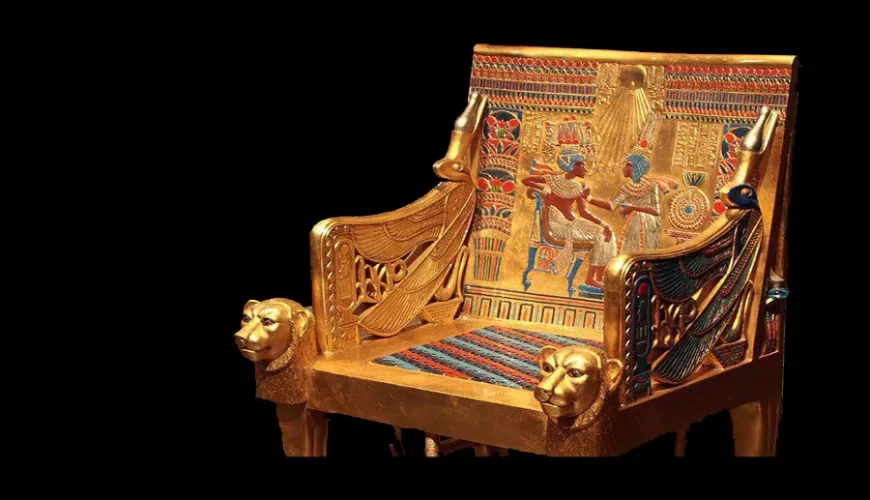
In modern times, the Golden Throne of Tutankhamun serves as a symbol of ancient Egypt’s rich cultural heritage and artistic achievements. It provides invaluable insights into the life and times of one of Egypt’s most famous pharaohs and the sophisticated society that flourished under his rule. The throne’s intricate design and symbolic motifs continue to inspire awe and admiration, highlighting the enduring legacy of ancient Egyptian civilization.
The Golden Throne of Tutankhamun is not just a piece of furniture; it is a masterpiece of ancient Egyptian art and a powerful symbol of the pharaoh’s divine authority. Its discovery has provided a wealth of knowledge about the artistry, culture, and symbolism of ancient Egypt. As we continue to study and admire this extraordinary artifact, we are reminded of the incredible skill and creativity of the ancient craftsmen who created it. The throne remains a testament to the grandeur and sophistication of ancient Egyptian civilization, captivating our imagination and deepening our appreciation for this remarkable period in history.
